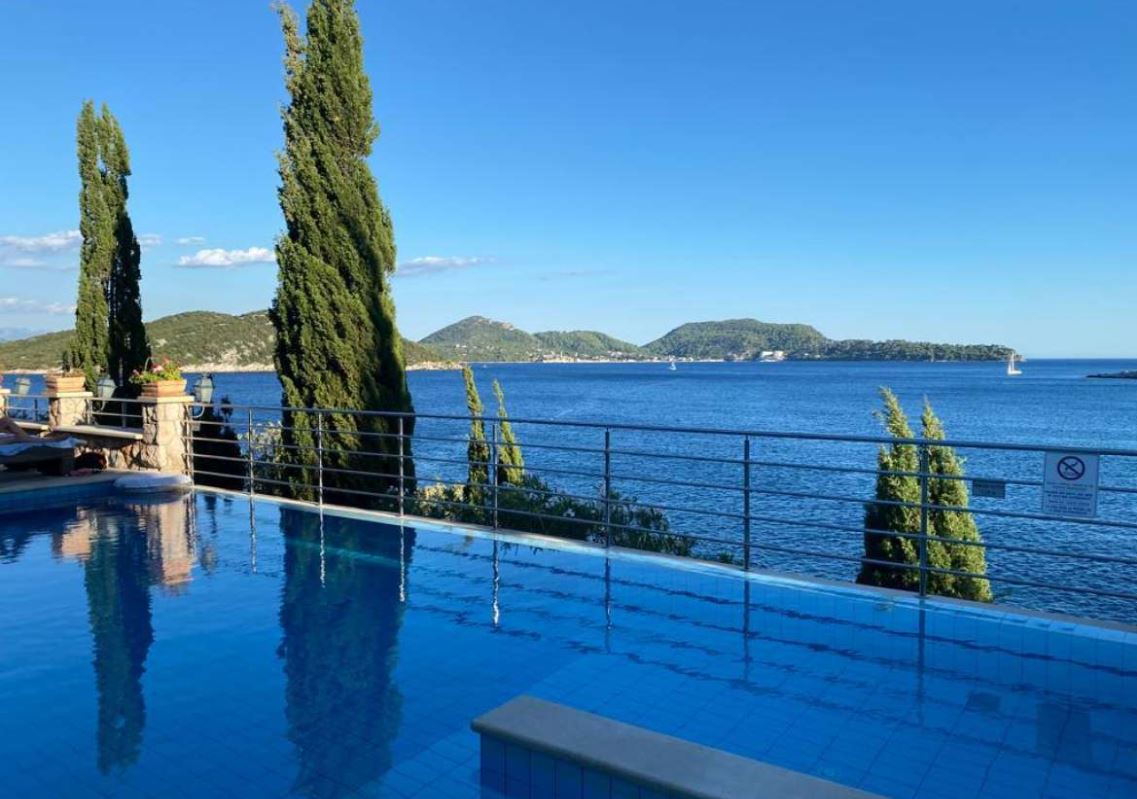Beyond the Dubrovnik Walls: 4. The Island of Sipan
June 17, 2022 - Continuing the new TCN series, Beyond the Dubrovnik Walls, yet another magnificent reason to explore beyond the historic old town UNESCO World Heritage Site - the island of Sipan.
So you think Croatia's islands are more or less the same?
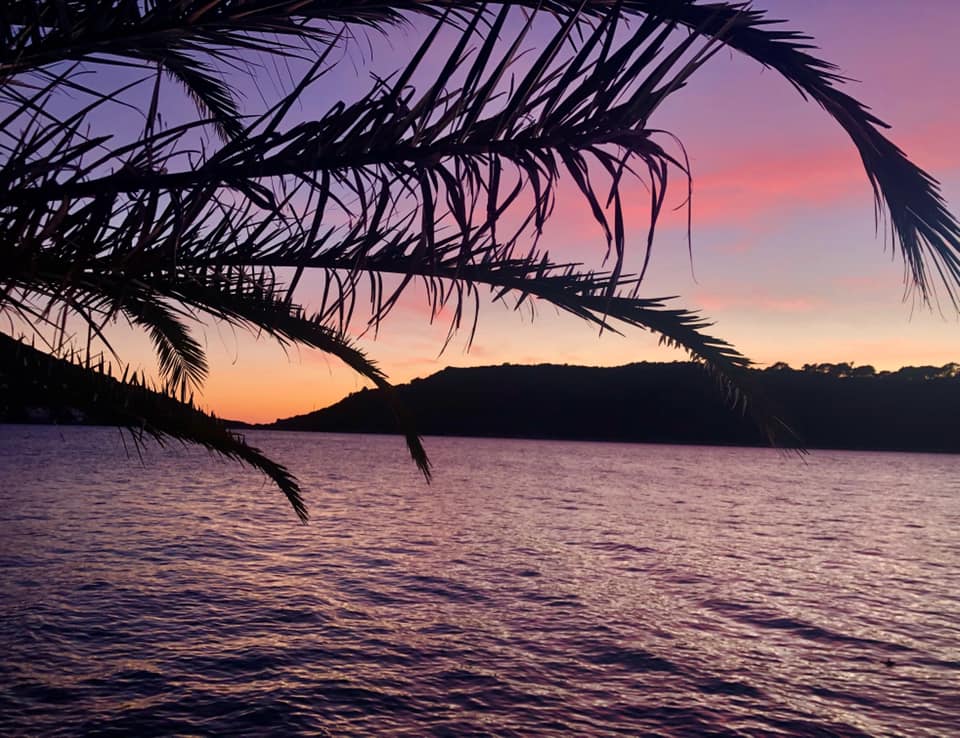
It can be hard for a tourist looking at the map trying to differentiate between all the different islands, to see which one might be the most suitable. But delve a little deeper, and you can find some rather extraordinary things - the oldest public theatre in Europe (Hvar), the oldest cricket club in mainland Europe (Vis), the birthplace of Marco Polo and the first abolition of slavery in 1214 (Korcula), and the birthplace of naturist tourism in Croatia after an abdicating British king went skinny-dipping (Rab).
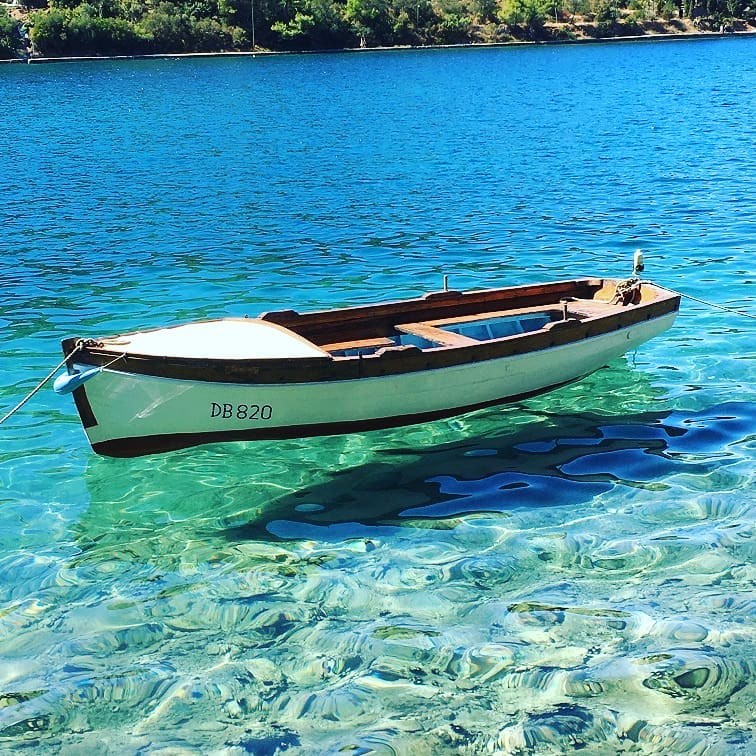
And an island which is in the Guinness Book of Records for the highest density of olive trees per square metre in the world, more than one million trees. That is a lot of natural gourmet goodness, and perhaps one of the clues for one of my favourite images of luxury Croatian tourism - the super yacht meets the simple and delicious way of life.
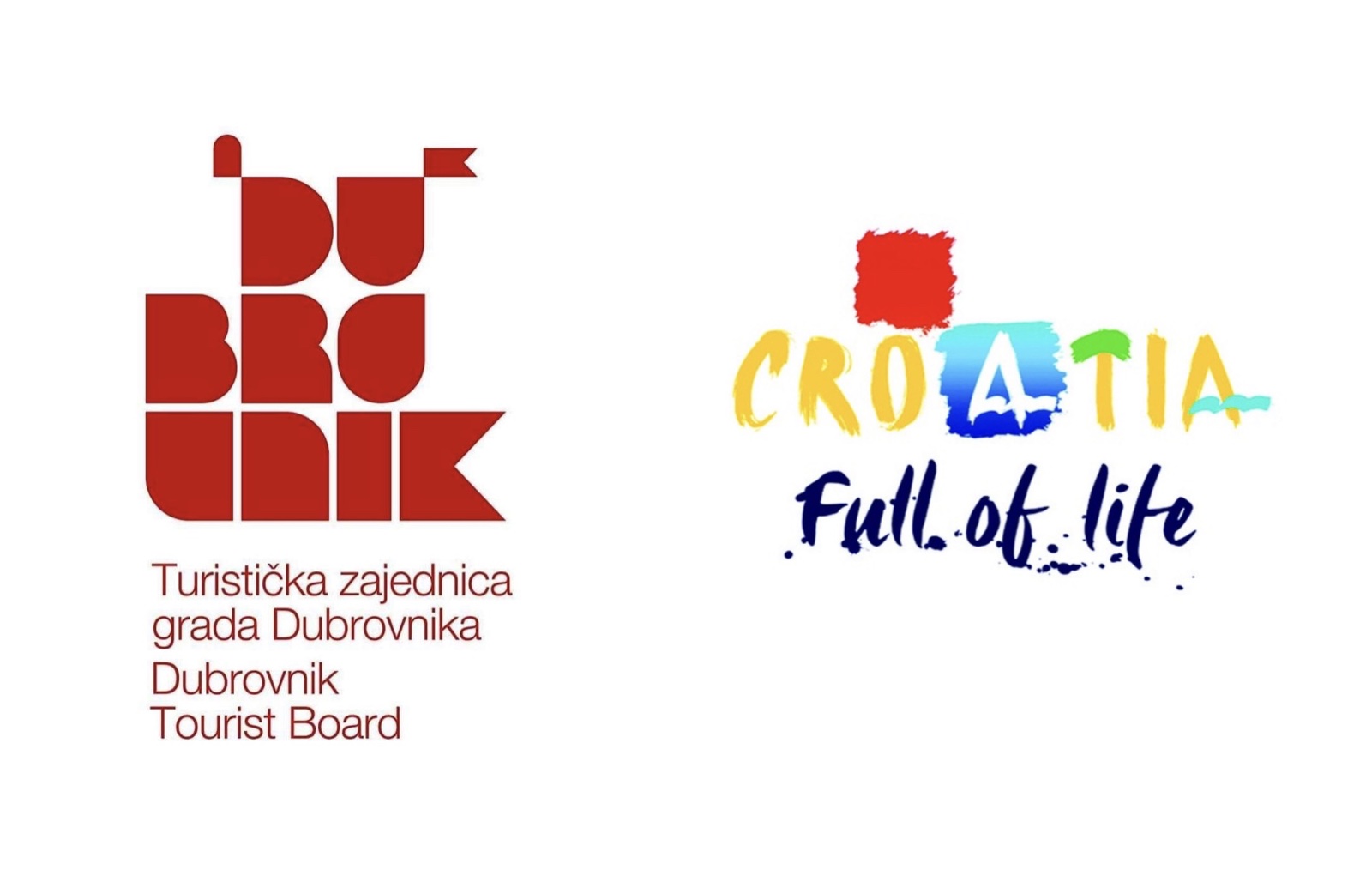
Given its proximity to Dubrovnik and the first islands near the Montenegrin border, the Elaphiti islands - and Sipan in particular - have proved to be very popular sailing destinations, particularly among the super-rich, who enjoy a more anonymous visit generally away from the prying eyes of the paparazzi. And they are rewarded by some of the best fish on the Adriatic, which Sipan is known for, as well as a number of excellent restaurants focusing on the finest local ingredients. And when you start with the finest fresh fish and abundant quality olive oil, combined with the freshest local produce, it is not hard to see why Sipan's restaurants have become a hit for the luxury tourism market.

Not that having lots of money guarantees you a place at dinner. One of my favourite stories during my visit concerned a very well-regarded restaurant in Sipanska Luka, whose simple quality Dalmatian fare is much sought after. The owner is very particular and insists on reservations only. No reservation, no place at the table, even if there is room. The story goes that on one unusually slow evening, a particularly wealthy gave entered the restaurant and tried to sit at one of several empty tables, only to be told that if he did not have a reservation, then he could not sit for dinner.

"But you are almost empty. Why would you turn away paying customers when you have empty tables, just because we don't have a reservation?"
"When I have reservations, I know exactly how much food I need to prepare, and I do not need any extra stress." Ah, Dalmatia...
Of course you don't need to be a multi-millionaire to visit the island of Sipan, far from it, and the regular daily ferries to Sudurad, via the other Elaphiti islands of Lopud and Kolocep, will get you there in just over an hour from Dubrovnik if direct, and 10-15 minutes longer if they stop at the other islands.
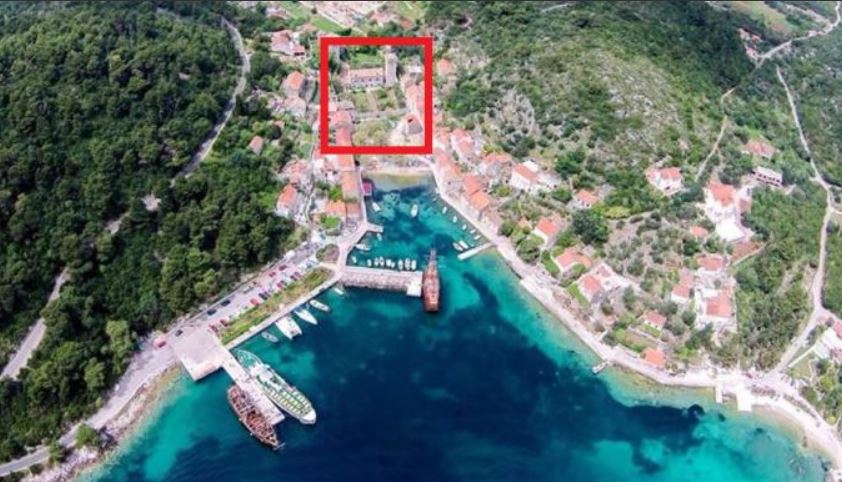
The furthest of the Elaphiti from Dubrovnik, Sipan is also the largest and the grandest, and some of the architecture is simply astonishing. In all, there are some 39 churches on the island, which cater to the present population of about 450, but the most impressive building for me was located right at the heart of the Sudurad bay - a Renaissance palace dating back to 1563.
The palace is equally impressive on the inside, with many original features on display - and still functioning, as well as a very well-maintained Mediterranean garden. The property sold a couple of years ago and is not in private ownership, but a private tour is possible to arrange. To get a flavour of what awaits you, Dalmatian Island Heritage: The Stunning Sipan Renaissance Palace in Sudjuradj.

The impressive Renaissance palace is by no means an exception, and the grand stone buildings dotted around are testament to the island's history as a summer retreat for the aristocracy in summers gone by. with its fertile land, water source, and peaceful setting, Sipan was an ideal escape for the rich and famous. Just as for the aristocracy in the 16th century, so too for the celebrities and superyachts today.
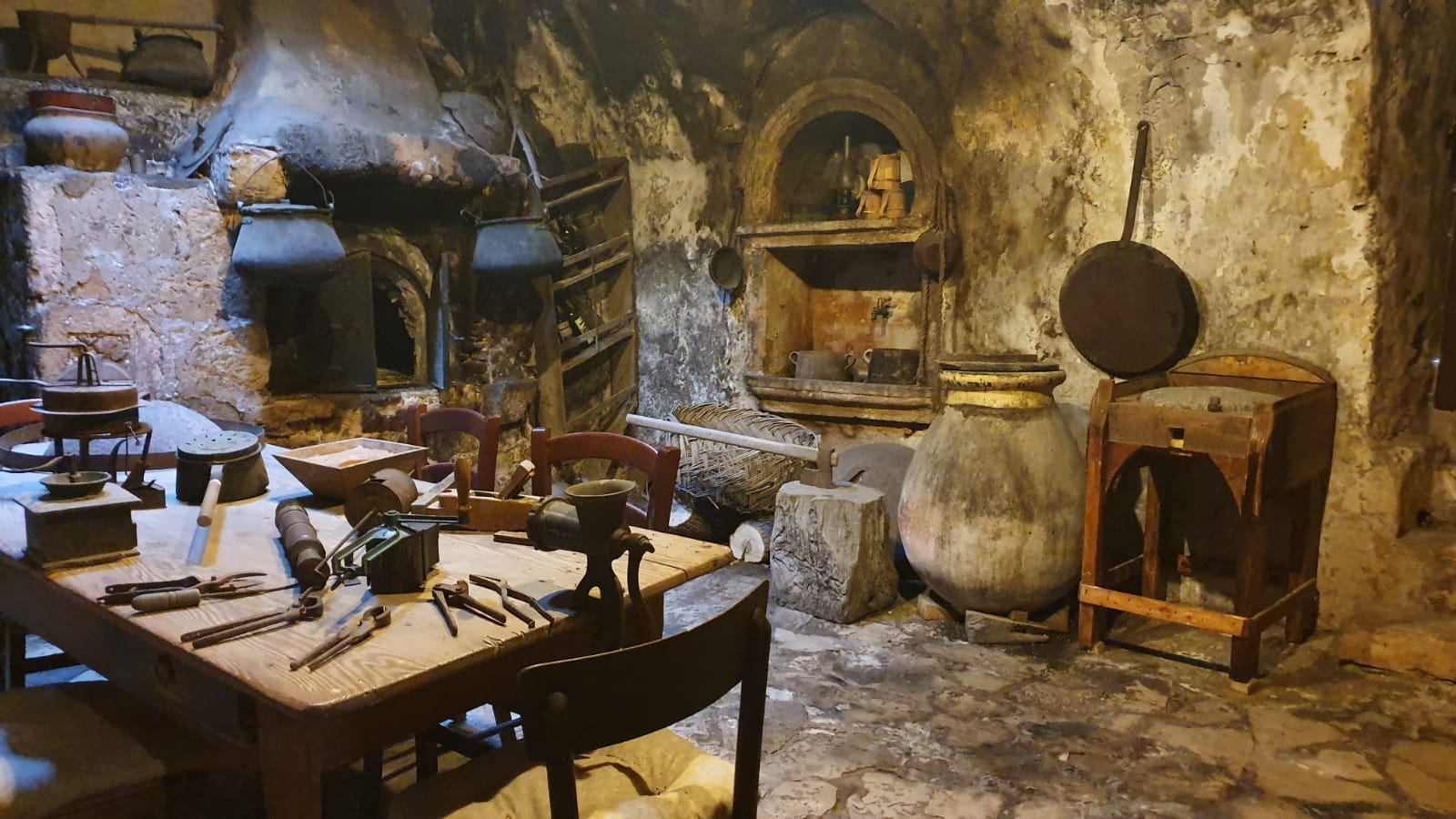
And yet, despite Sipan being attractive to the rich, it also has the chilled Dalmatian vibe of another gorgeous island, with pretty waterfront settlements offering the relaxed cafe lifestyle.
After visiting the two car-free islands of Kolocep and Lopud, it was something of a surprise to find cars on Sipan, as well as a decent paved road. The drive through the heart of the island between the two main settlements of Sudurad and Sipanksa Luka was magical - vineyards, and olive groves, those Guinness Book of Records olive groves. The land looked SO fertile and reminded me very much of the UNESCO World Heritage Site, the Stari Grad Plain on Hvar, where little has changed with the agricultural process since the arrival of the Ancient Greeks almost 2,500 years ago.

Sipanska Luka (which literally translates as Sipan Harbour) also has its own ferry once a day in season (although not with Jadrolinija) and is a much deeper bay than at Sudurad. It is popular for the sailing community for those excellent restaurants and relaxed way of life, and it also has more than its fair share of historic buildings.
The island of Sipan has been gaining local acclaim as a very serious dining destination, especially when it comes to fresh fish and olive oil. It helps that chartered boats and Three Island Cruises (Elaphiti Island Tour from Dubrovnik) stop for lunch on Sipan. Places like Kod Marka or Tauris have long lists of satisfied customers singing them praises. A recent addition, Bowa, is nothing less than spectacular. It is a restaurant in a secluded bay. It is accessible mainly by boat and it features seating on the wooden pontoons over the water. The owner is an avid big game fisherman and the resulting food is fresh, delicious and above all – local.
Hotels on Sipan are Hotel Bozica in Sudurad and Hotel Sipan in Sipanska Luka. Hotel Bozica is a 4-star property, highly rated and situated in a beautiful location in the bay of Sudurad (Read more from my visit in Hotel Bozica on Sipan: An Elaphite Delight in Sudjuradj). Consequently, it overlooks the bay and surrounding islands. It is built in a typical Mediterranean style fitting in nicely with the local houses. At the same time, Hotel Sipan is in the middle of Sipanska Luka bay and is a great choice for those wishing to be centrally located with easy access to great restaurants, bars and beaches. Private accommodation is also available but not in plentiful supply, so you are advised to book early.
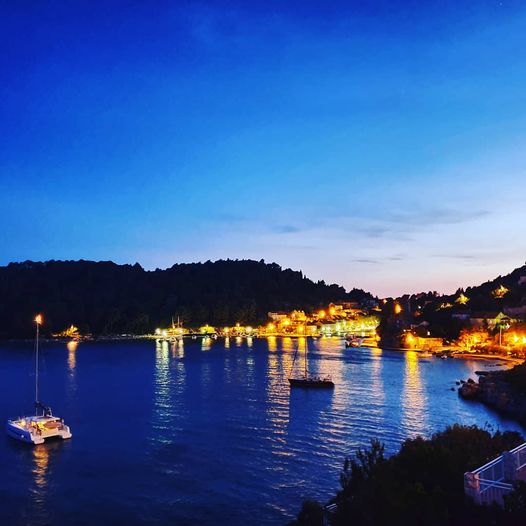
Sipan is also a great walking, hiking or trekking destination. The island houses 39 old churches as well as 42 medieval residences of varying degrees of upkeep. Apart from examples of old architecture, hiking across Sipan means walking through olive orchards and shrubs of Mediterranean aromatic herbs, a wonderful aromatic experience. The highest peak of Sipan is Velji Vrh at 243 metres above sea level. Hiking up to it is not too strenuous, but you should bring water and sunscreen along. From there you will have a great view over the island and the surrounding archipelago.
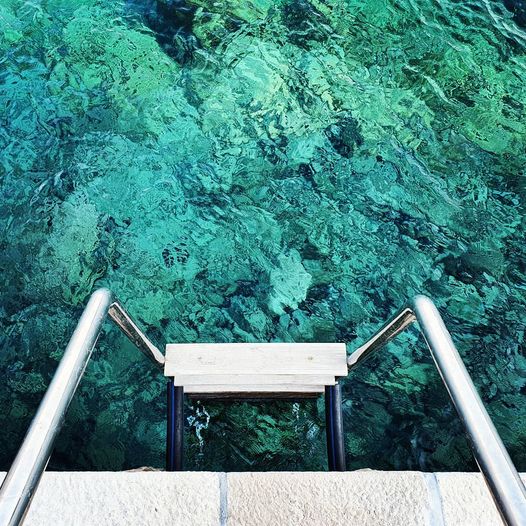
Dubrovnik beyond the walls, a new way to look at the Pearl of the Adriatic. And with so many different options available, tailor your Dubrovnik experience to your specific needs.
To learn more about the Beyond the Dubrovnik Walls series, follow the dedicated section.
Beyond the Dubrovnik Walls: 3. The Island of Lokrum
June 16, 2022 - Continuing the new TCN series exploring beyond the Dubrovnik walls, an escape from the crowds to one of the top treasures of the Adriatic - the island of Lokrum.
For those who tell me that Dubrovnik is just a 2-day destination and that there is nothing really to do outside the old town, I smile. I don't think I have ever come across a destination in Croatia which has so much more to offer than the stereotype it possesses. There are so many things to do in and around Dubrovnik that I would argue a week is not enough. Indeed, the inspiration for this new TCN series, Beyond the Dubrovnik Walls, were last year's 10 Dubrovnik Digital Nomads-in-Residence, who proclaimed that they were not ready to go home after a month in the city, and that one of the key messages Dubrovnik had to develop was the rich offer for tourists 'beyond the walls.' Yes, the old town is unmissable, but so too is the magic that is all around. Including one of my favourite places in all Croatia...

The island of Lokrum.
I knew little about the island of Lokrum before I visited, except that it was one of the most-visited attractions in Dubrovnik, a place where locals (and tourists) went to escape the summer crowds and heat. But, as I quickly learned on my first visit a couple of years ago, Lokrum is so much more than that. In addition to being the cleanest place I have ever seen in Croatia, the wealth of nature, culture, heritage and overall magnificence is quite astonishing. Do not go to Dubrovnik and miss out on a trip to Lokrum. Your visit would be all the poorer.

Let's start with the cleanliness. Lokrum is a nature reserve which is taking itself very seriously. It is forbidden to smoke or light a fire on the island, dogs are not allowed, and it is not permitted to spend the night on the island. Indeed, only two members of the Lokrum Fire Brigade sleep on the island. The island is immaculate! And the beautifully maintained horticultural and botanical attractions serve to give Lokrum an even more squeaky clean feel.
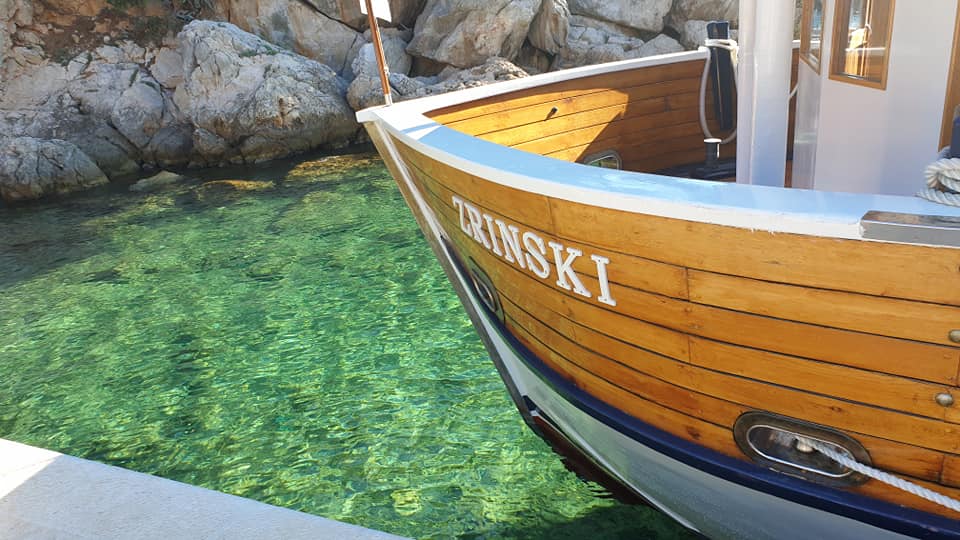
Just 10 minutes by boat from the old city (regular departures from the old harbour take place every 30 minutes during the day from April to November), the island of Lokrum is truly a world away, and the journey on the restored 50-year-old wooden boats is an experience in itself, as you watch the majestic old city disappear into view behind, before approaching the island from the far side, with the city out of sight.
Welcome to Nature!

Lokrum has its own biodiversity and unique climate, a fact that has been noted since ancient times, and the rich diversity of its plant life was enriched in 1959 when two hectares of land were allocated to the Botanical Garden, where the first exotic species were planted. Walk around today, and you can find about 400 indigenous species from Australia, South America, Africa, other parts of the world and the wider region. An extraordinary collection, and combined with the island's carefully manicured hedges and gardens, this is one area where Lokrum stands out from other islands. But only one, for there is so much more to this exceptional island.
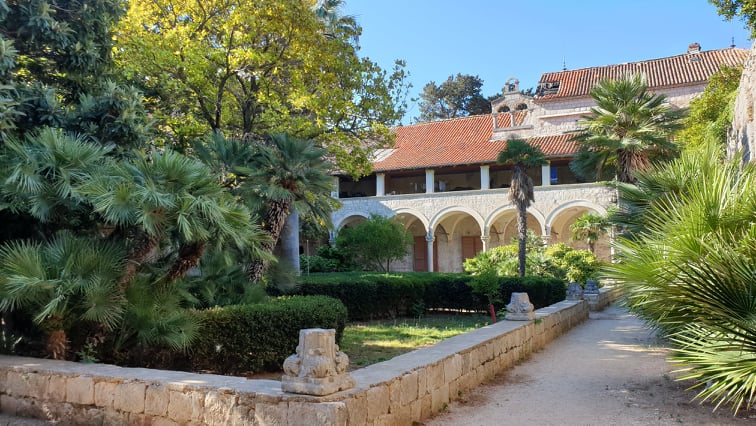
The legacy of Game of Thrones is massive in Dubrovnik, with more than a few visitors knowing the city by its screen name of Kings Landing. Not only was the island of Lokrum also used as a filming location, but the hit HBO show The garden of the old Benedictine Monastery was used to shoot scenes depicting the fantasy city of Qarth in Season 2 of the show. In this scene Daenerys Targaryen introduces herself to a few members of local society. Later on, just before she enters the House of the Undying, she is standing on the stairs that are part of Lokrum’s Gardens of Maximilian.

The most important area for Game of Thrones lovers is a tin GoT museum in the former Benedictine Monastery. There sits the Iron Throne, the most important seat in the Kingdom of Westeros. Not only that, but it is free for visitors to sit in and take pictures.
While Game of Thrones may not be real, there is plenty of actual history on the island of Lokrum, which was first mentioned in 1023, with the founding of the Benedictine monastery and abbey. And it is the Benedictines who are responsible for the so-called Curse of Loktum, which is animated in the museum in the monastery basement.
The last Benedictines left the island in 1808, when the island was sold to new owners. On their last night, the monks placed a complex curse on the island. Since then, anyone who tried to seek Lokrum for their own has met an unexpected and untimely death.
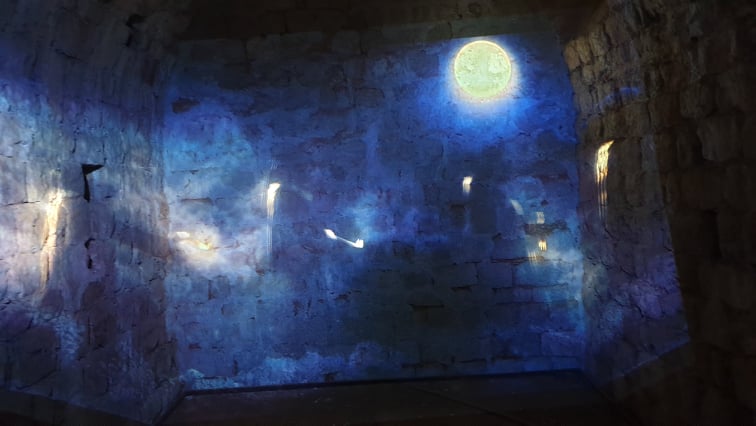
The night before the monks left, they gathered in their hoods, lit their candles, turned them upside down, and with their heads bowed, whispering prayers and murmuring songs, slowly walked around their ancient holding, mourning their loss and saying goodbye to their beautiful home.
The legend, of course, adds drama to such a goodbye.
The dark and mysterious line of monks in the end cursed the future owners of the island under the flickering light of candles. The legend, to which certain deaths and accidents that happened to local sellers and owners were associated, would have faded away if not for the tragedies which befell the family of the Austrian emperor and the Croatian king Francis Joseph I, whose family members owned Lokrum.
The execution of the emperor’s brother, Archduke Maximilian, in Mexico, the assassination of his wife Elisabeth at Lake Geneva and the suicide of his son and heir Rudolph in Mayerling violently and forever impressed the legend in collective memory and enshrouded the island in dark shadows.
A happier legend took place more than 500 years earlier, when English King Richard the Lionheart's ship got into trouble in storms on the way back from The Crusades. Vowing to build a church on the land that might save him, the famous English king finally found shelter on Lokrum where he was shipwrecked, but survived. Keeping true to his promise, Richard built the promised church, although locals persuaded him to do so in the old town of Dubrovnik, rather than the island of Lokrum. It is said that the ensuing church was built on the site of today's Dubrovnik Cathedral. There is an exhibition to the episode in the basement.

One of Dubrovnik's more unusual claims to fame is that it is the birthplace of quarantine, with the first State-sanctioned quarantine stations set up on two nearby islands in the Dubrovnik Republic back in 1377. This concept was extended to the Lazareti, just outside the city walls, a beautiful stone complex which served as a 40-day quarantine area for traders, and which today is a multi-purpose event and entertainment centre, including arguably Europe's most beautiful co-working space.
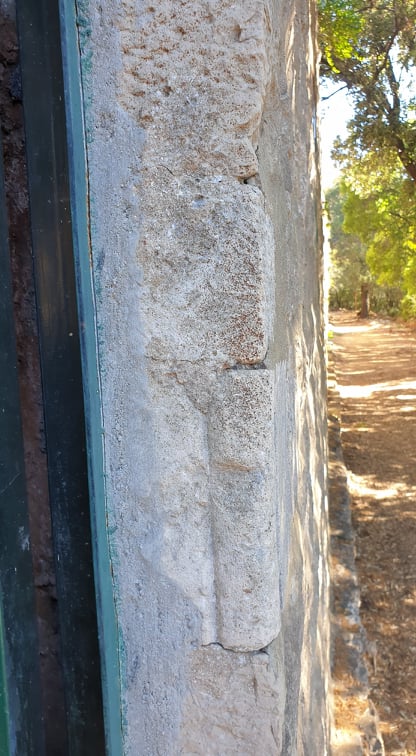
Lokrum has its own Lazareti complex which is well worth a visit, if only for the incredible precision of the 16th-century stone walls, which are straight as an arrow and 100 metres by 100 metres. Inside the walls, it was intended to house a large quarantine facility, and you can still see the remnants of the toilets, fireplace and ventilation in the individual cubicles, but the complex was in fact never completed. Some time later, the authorities realised that such a construction could be used against the republic if the island was successfully invaded. Some of the stone was therefore transferred to the city and used in the construction of Dubrovnik's iconic old town walls.
That strategic importance was not lost on the French when they successfully invaded in 1806, and they began to erect a fort on Glavice hill, some 97 metres above sea level. The impressive fort, complete with ramparts and ditches, was then further developed by the Austrians in the 1830s. The legacy for the tourist today is a wonderful hike along Lokrum's narrow streets to the top of the fortress, where you will be rewarded with quite the magnificent views of the old town and surrounding area. I was fortunate enough to be on an official trip, and the Lokrum Fire Brigade had time to give me a rather magical tour. Get a flavour in the video below.
Looking to swim? There are some great beach options on the island, including the best naturist beach in the world last year.

For a more unusual experience, how about a drink and swim by the Dead Sea - not perhaps as famous as its Middle Eastern counterpart, but a cool place to swim and actually part of the Adriatic and once a cave. An ideal spot if you want to have a drink and relax while the kids splash around.
One of the many things I loved about Lokrum is how the island is being used to blend nature with work and education. Local schools regularly have classes and workshops here, a wonderful outdoor environment which can only inspire young minds. The recent Work. Place. Culture conference in Dubrovnik also took advantage of the stunning natural setting, with a relaxing day including workshops on wellbeing being held in the monastery gardens.
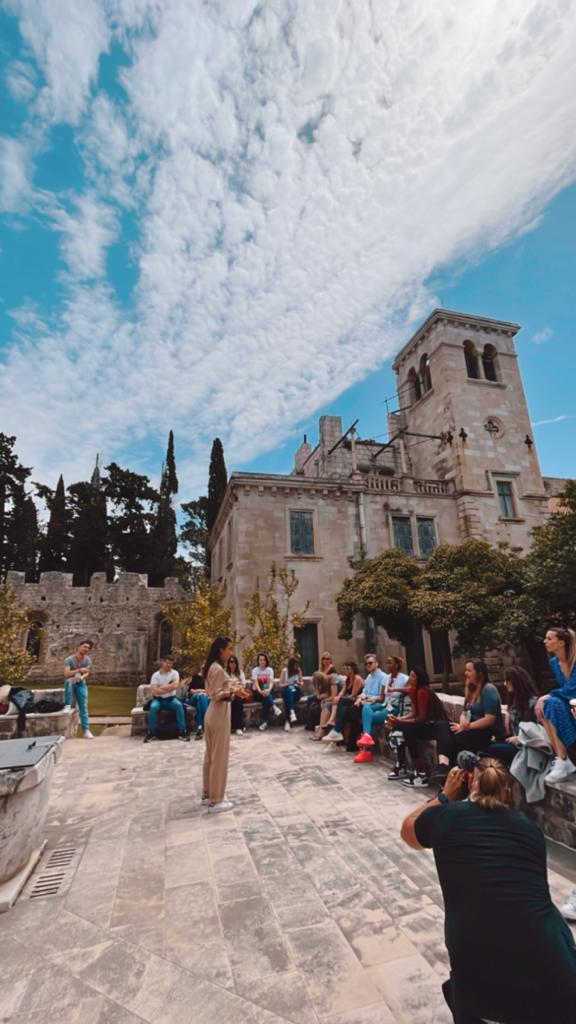
Even the resident peacocks decided to take part.
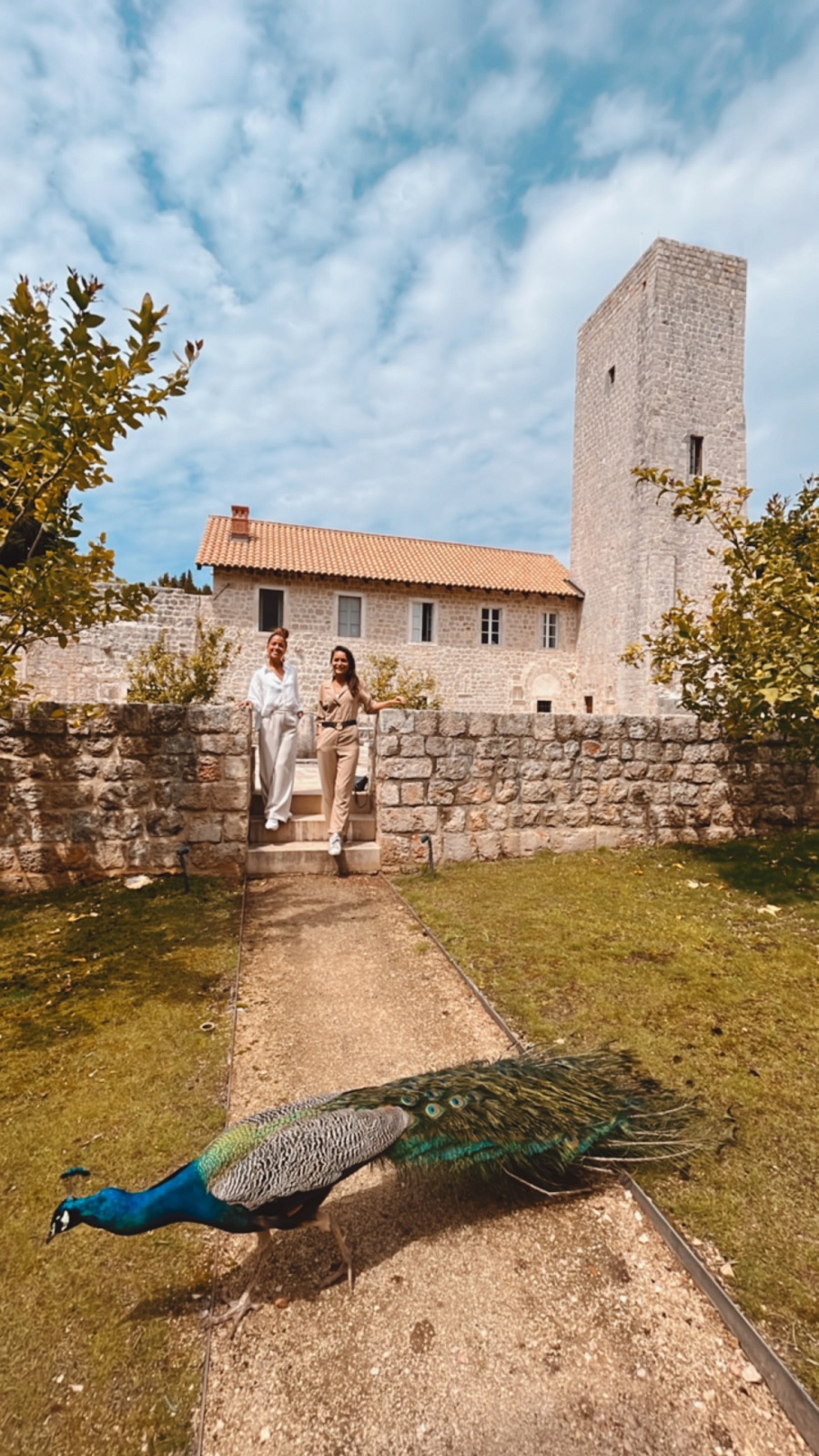
There are a couple of bars and a snack bar on Lokrum, but the best place to dine (and in idyllic botanical surroundings) is Lacroma Restaurant, a short walk up from the ferry. There is an excellent local menu, and the gin combinations with local herbs are a definite trip highlight.
And then, at the end of the perfect day in nature and relaxation, time for the short and picturesque journey back to Dubrovnik for the evening entertainment. Dubrovnik Beyond the Walls is indeed a magical place.
Tickets to enter Lokrum, including the return boat journey, are 200 kuna.

Dubrovnik beyond the walls, a new way to look at the Pearl of the Adriatic. And with so many different options available, tailor your Dubrovnik experience to your specific needs.
To learn more about the Beyond the Dubrovnik Walls series, follow the dedicated section.
Beyond the Dubrovnik Walls: 2. The Island of Lopud
June 16, 2022 - Dubrovnik is perceived to be a 2-day destination with everything concentrated inside the UNESCO old town, but it is so much more than that. Find out what, in the second of a new TCN series - Beyond the Dubrovnik Walls. Meet the island of Lopud.
Seeing things with a fresh pair of eyes is always instructive. Almost a year ago, at the conclusion of the Dubrovnik Nomads-in-Residence programme, A Dutch digital nomad gave an initial presentation to the mayor, tourist board, media and public on his group's findings after 4 weeks as guests of the city. Their brief was to look at Dubrovnik through the eyes of digital nomads and to work with Dubrovnik to create an effective strategy for future development. His presentation was simple, concise, in many ways obvious, and made the whole room pause to think.
His first slide showed the first 30 images on Google Images of Dubrovnik, and they all showed the same thing - the stunning UNESCO World Heritage Site that is the old town of Dubrovnik. One nomad commented that prior to coming to the city, he was not even sure if Dubrovnik had anything of interest or substance beyond the walls. The perception that Dubrovnik was a 2-3 day destination is one that changed during his stay of four weeks, and he announced that after almost a month, he was still not ready to go home.
The magic of Dubrovnik for all these nomads was not the gorgeous old town, stunning as it undoubtedly was, but what lay beyond the walls - the rest of living, breathing Dubrovnik and its surrounding area. In some ways, it was an obvious point, but taking the focus away from the old town seems somehow innovative. And having thought about it, the perception of the reality of Dubrovnik as a destination can only change if we show Dubrovnik, the reality, rather than Dubrovnik, the Instagram poster child.
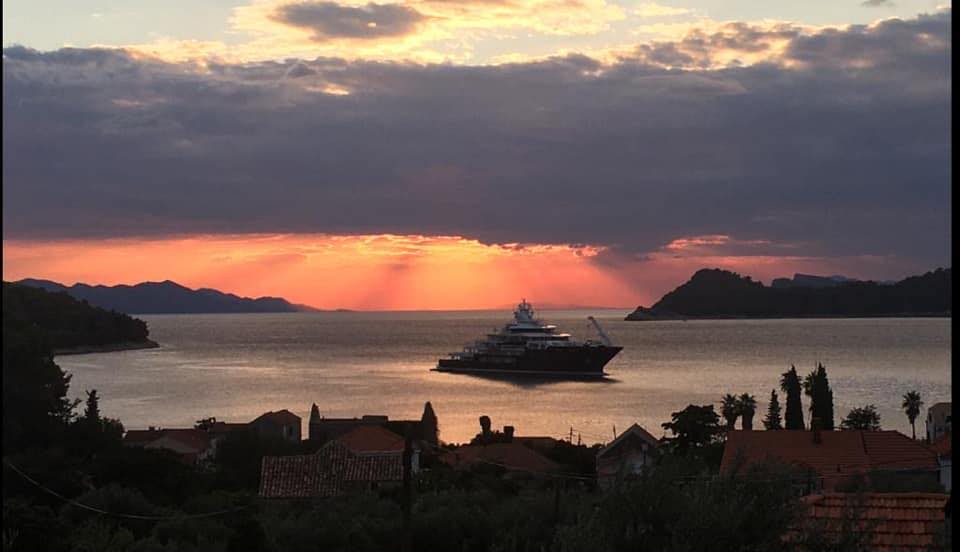
Welcome to Dubrovnik Beyond the Walls, a new TCN series showcasing the magic of this incredible city, but away from its photogenic famous old town. There you can take in centuries of history, culture and tradition, but if you take a bus, boat, or short walk, there are many other Dubrovnik experiences to be enjoyed which complement the famous main attraction. After our first feature article on the Island of Kolocep, also known locally as Kalamota, it is time to swim a little further to the second car-free of the Elaphite Islands, gorgeous Lopud.

One of the few constants in my Facebook feed during the summer is an almost daily dose of the magical sunsets of Lopud. A friend of mine has roots on the island, and it seems he never tires of the beauty of what he sees before him every evening. I felt that I knew the island's views long before he invited me to visit a couple of summers ago.
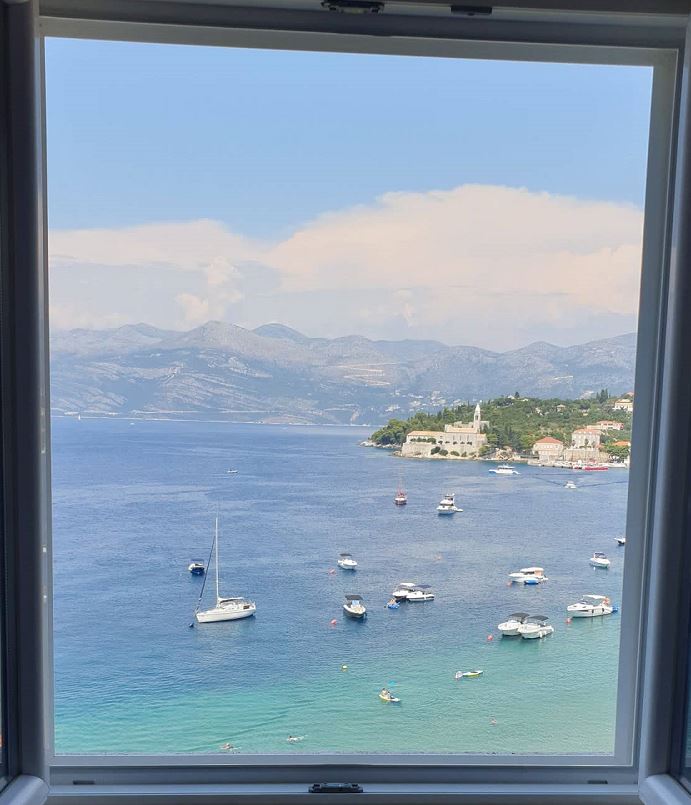
And it did not take me long to fall in love with yet another exceptional Dalmatian island, or to discover that the sunset views were just part of the magic. How about this for a bedroom room with a view, for example? No wonder he was spending less time in Zagreb...
There is an excellent and regular ferry service from Gruz harbour in Dubrovnik, which takes passengers to all three of the Elaphiti islands, stopping firstly on Kolocep, before arriving in Lopud just under an hour after departure. While most of the life on the island is concentrated in the village and riva close to the ferry, sun worshippers in search of a sandy beach make the journey and then hike to the other side of the island for a rare treasure - a high-quality sandy Dalmatian beach.
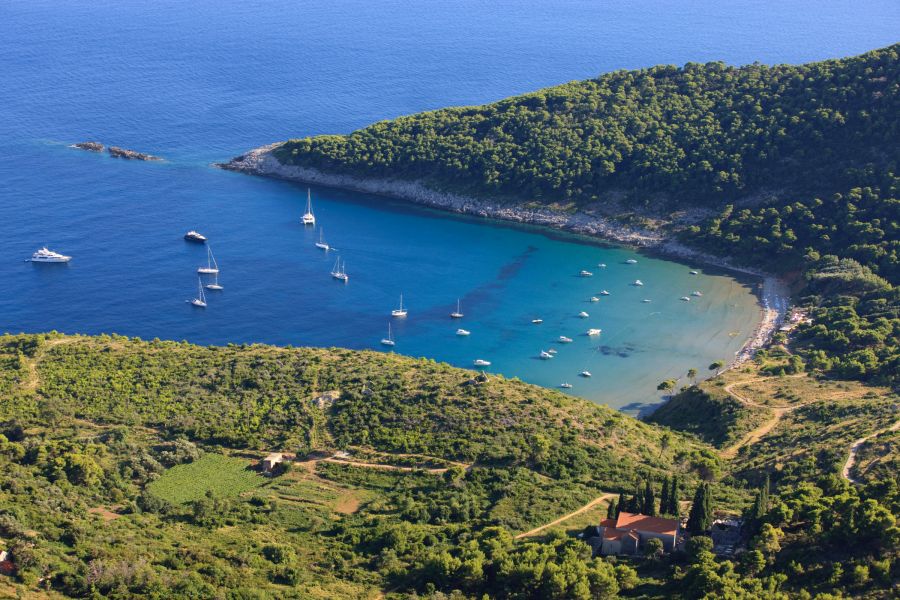
There are quite a few popular beaches in the Dubrovnik area. Some are popular with locals, some with tourists, but none is universally as loved as Sunj Beach. Sunj is located on the south-eastern end of the Island, facing Dubrovnik. Notably, it is Elaphiti’s most popular port of call for private and chartered boats. You can get to it on foot from Lopud village by following one of the marked footpaths through the woods. It bears the name of Czech writer and politician Viktor Dyk who was in love with Lopud. The path also features a monument built in his honour in 1936. Sunj Beach has some beach amenities available like a bar, restaurant and lounge chairs. It is indeed the most spacious sandy beach of Elaphiti and it will remain everybody’s favourite for quite some time.
For the buzz of daily life, however, simply step off the ferry and into the relaxed bustle of traditional Dalmatian island life, where the pace of life is slow and chilled. The riva appeared to me almost like a living room, with some residents actually bringing out chairs in front of the house to soak up daily life.
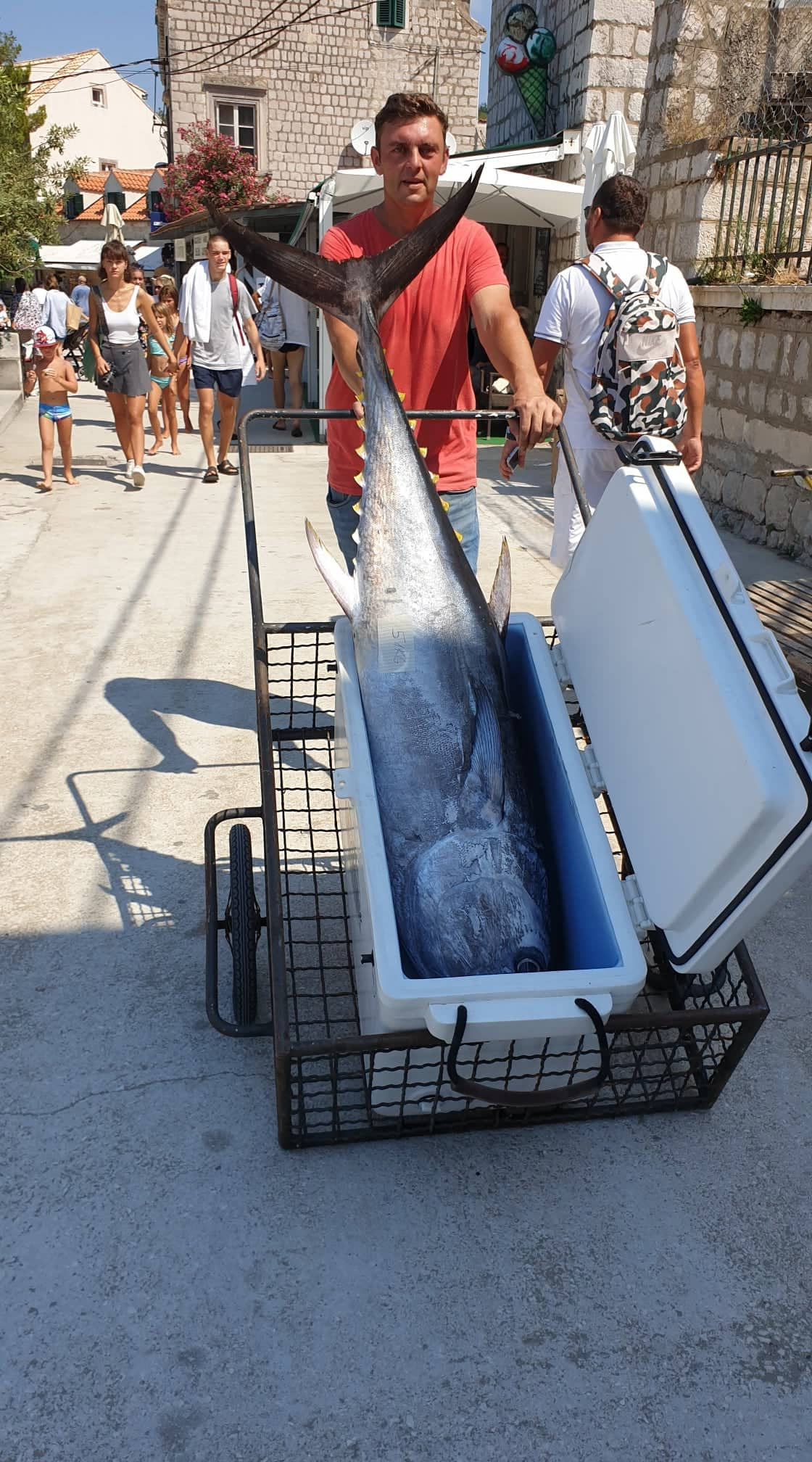
It did not take long on Lopud to work up an appetite. If you are into your seafood, just grab a coffee at a cafe on the riva and watch the catch of the day pass by.
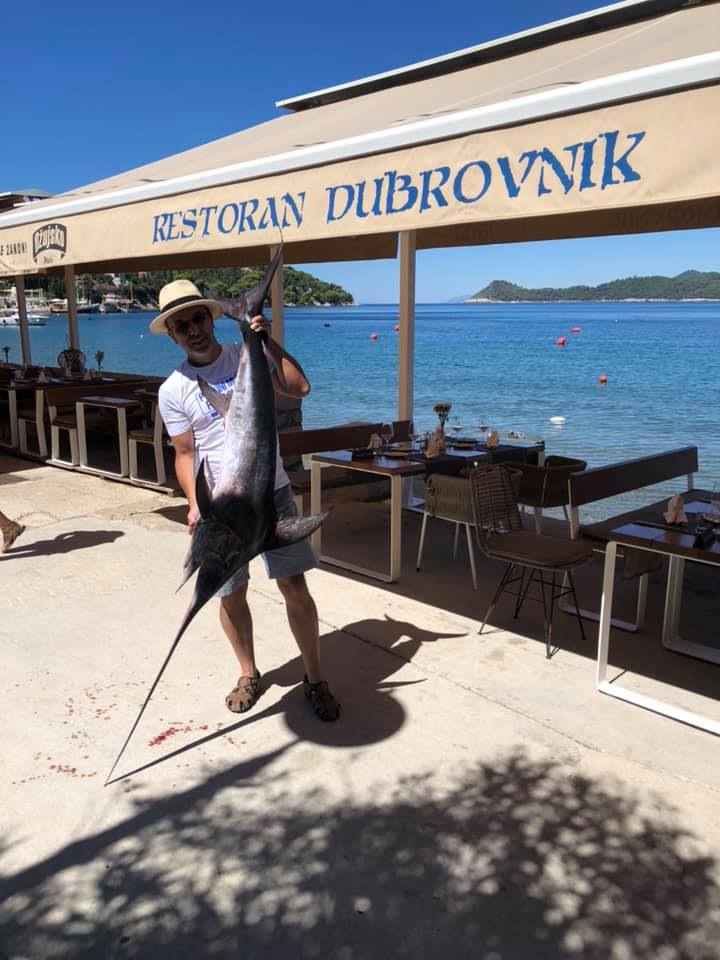
Or check with the local restaurants what they have on offer for the catch of the day. There was something about the riva on Lopud that really appealed to me - something for everyone, including a family-friendly beach, local honey and fig selling their wares, full-time locals greeting Zagreb-based 'part-time islanders' with island banter. Relaxed, jovial, welcoming, safe.
But Lopud also has some rather remarkable and unique treasures to boast, some of them really rather unusual.
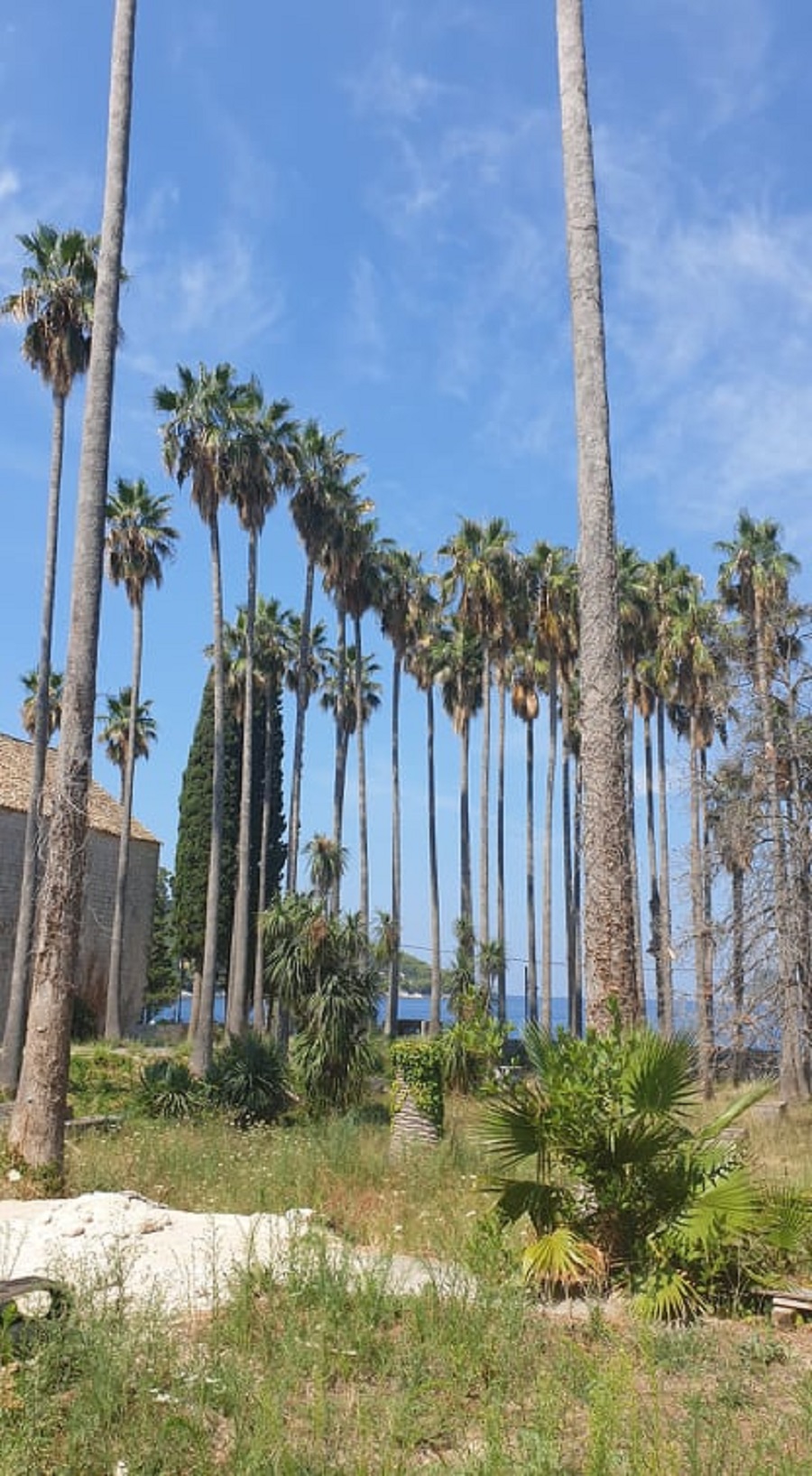
Did you know, for example, that the island of Lopud is home to the tallest palm trees in Europe?
And behind these majestic palm trees, which adorn the Lopud waterfront, is something really quite unusual and unexpected - the world's first concrete hotel, built back in 1936!
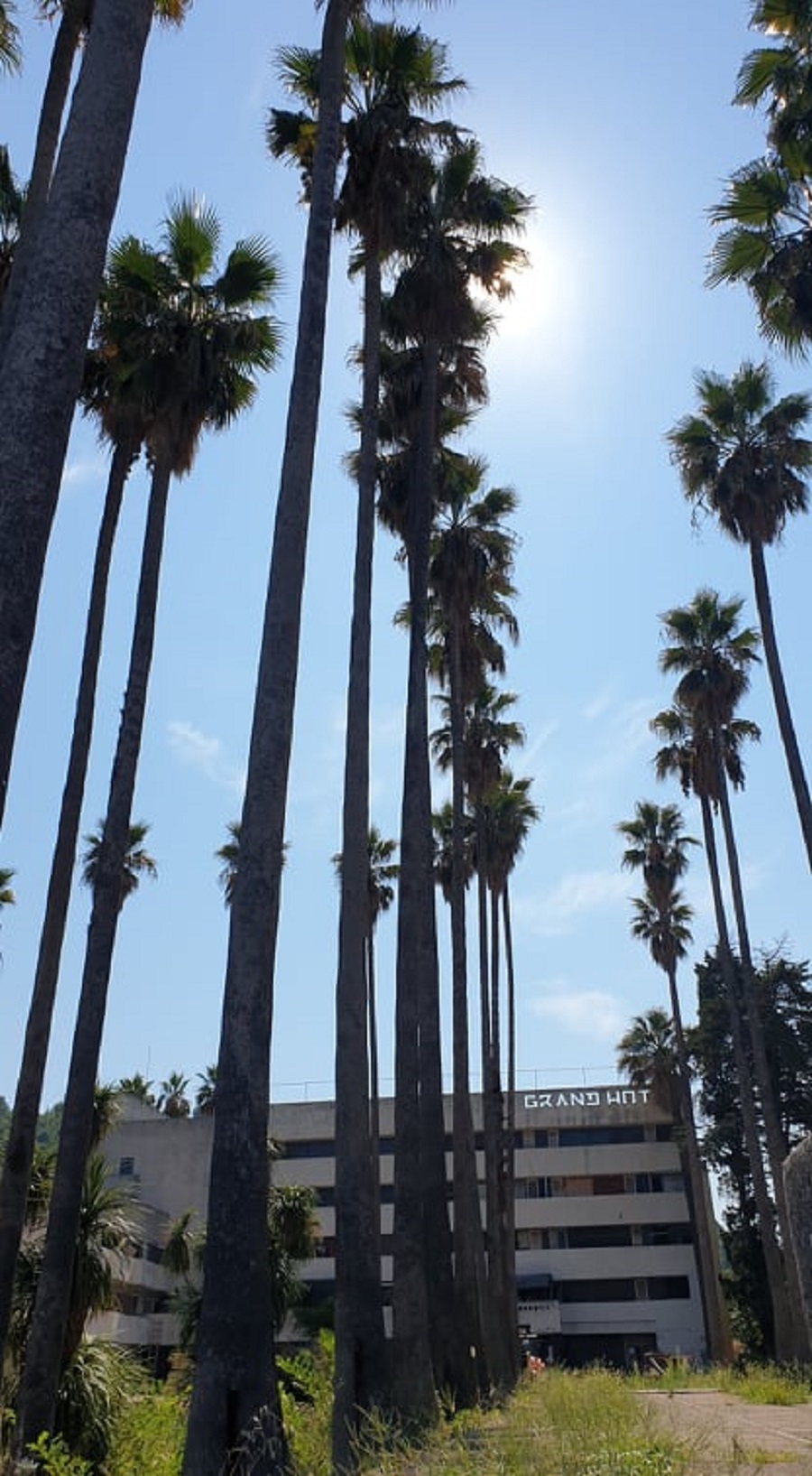
The hotel was opened by Czech owners just 3 years before the opening of the Second World War and is a major example of the bold architecture of Nikola Dobrovic, whose reinforced concrete hotel was his crowning work. It was designed in the shape of a ship from above, complete with a tennis court on the roof, and it looked out to the Adriatic through those impressively tall palm trees, as well as ubiquitous bitter orange trees, for which Dubrovnik is famous.
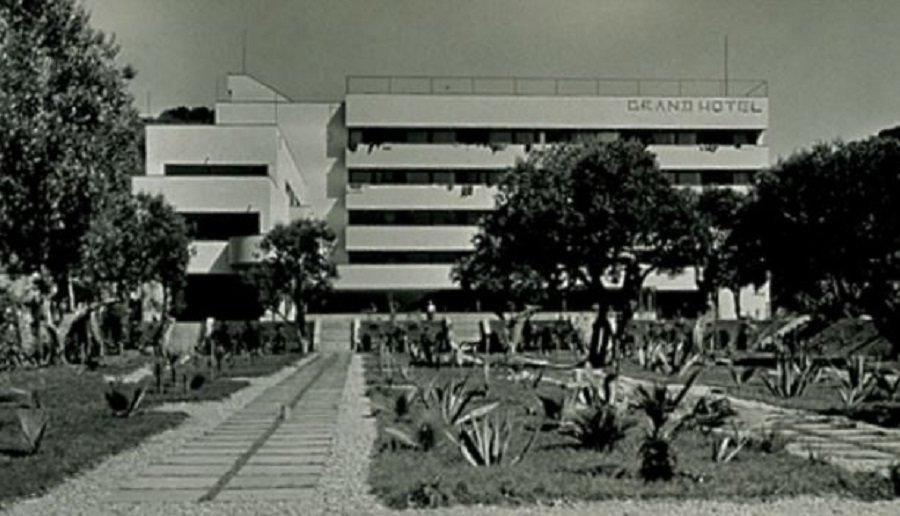
Then came the Second World War, an end to tourism temporarily and a new use for the young concrete hotel - an internment camp for the Jews of the Dubrovnik region. Some 600-700 were interned there. The glory days of this unique concrete hotel were undoubtedly the 1980s before the Homeland War. Life in former Yugoslavia was cheap, life was very liberal, and tourists came to visit knowing they would have a wonderful sun-soaked relaxing vacation at an affordable price.

Plans are in place to renovate the famous concrete hotel, reducing the number of original rooms to provide more spacious accommodation for modern needs. And while we wait, those tall palm trees will continue to sway gently in the evening breeze, as they observe yet one more of some of the best sunsets in Europe.

And while Lopud might have set the pace in 1936 in the world of concrete hotels, today it is leading the way with luxury boutique hotel tourism. Located on the northern peninsula, LOPUD 1483 is a restored Franciscan monastery that has been overlooking the Elaphiti Islands and Croatia’s Dalmatian coast for centuries. After an extensive and sympathetic restoration by renowned art visionary, Francesca Thyssen-Bornemisza, LOPUD 1483 has opened its doors to guests and this five-suite, 15th-century monastery is available to rent exclusively for private stays and events. It is one of THE places to stay on the Adriatic.

For those on more of a budget, there are two more hotel options, both in Lopud village. They are both close to the sea but are vastly different in their design and feel. Hotel Glavovic is a 3-star property and is a recently revived historical hotel originally opened in 1927. On the other hand, 4-star Lafodia Sea Resort is quite a different story. It is a big, modern, and stylishly designed property featuring plenty of amenities and amazing sea views. The island of Lopud also has an excellent range of luxury private villas, many of them with pools.
The majority of Lopud Island’s dining spots are in Lopud Village with some dining options also on Sunj Beach. You will find great choices in the historical Lopud with restaurants Dubrovnik and Obala worthy of a special mention. Hotel Lafodia is also a place where you can find great cuisine. Their La Baja Bar & Grill is a cool option for enjoying a bite to eat or a refreshing drink next to the beach. This restaurant is known for featuring live entertainment in the evenings as well. Many of Lopud restaurants have terraces with amazing views over the bay and will not let you forget what a gorgeous place you are spending your vacation.
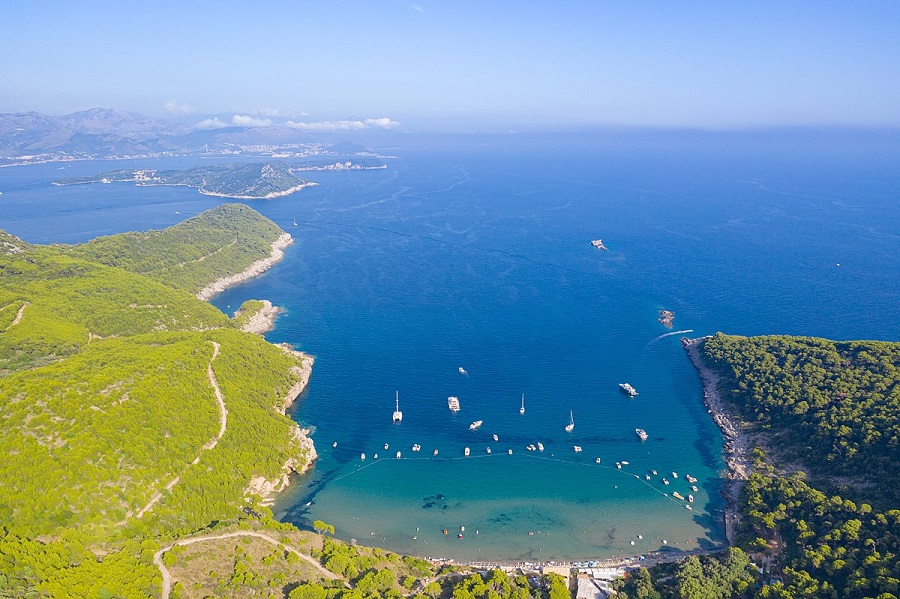
A quite magnificent island, and one which is less than an hour by regular ferry from Dubrovnik. The pace of life on the island of Lopud could not be more different from historic Dubrovnik.
Dubrovnik beyond the walls, a new way to look at the Pearl of the Adriatic. And with so many different options available, tailor your Dubrovnik experience to your specific needs.
To learn more about the Beyond the Dubrovnik Walls series, follow the dedicated section.
Beyond the Dubrovnik Walls: 1. Island of Kolocep (Kalamota)
April 1, 2022 - Dubrovnik is perceived to be a 2-day destination with everything concentrated inside the UNESCO old town, but it is so much more than that. Find out what, in the first of a new TCN series - Beyond the Dubrovnik Walls. Meet the island of Kolocep, also known as Kalamota.
Seeing things with a fresh pair of eyes is always instructive. Almost a year ago, at the conclusion of the Dubrovnik Nomads-in-Residence programme, A Dutch digital nomad gave an initial presentation to the mayor, tourist board, media and public on his group's findings after 4 weeks as guests of the city. Their brief was to look at Dubrovnik through the eyes of digital nomads and to work with Dubrovnik to create an effective strategy for future development. His presentation was simple, concise, in many ways obvious, and made the whole room pause to think.
His first slide showed the first 30 images on Google Images of Dubrovnik, and they all showed the same thing - the stunning UNESCO World Heritage Site that is the old town of Dubrovnik. One nomad commented that prior to coming to the city, he was not even sure if Dubrovnik had anything of interest or substance beyond the walls. The perception that Dubrovnik was a 2-3 day destination is one that changed during his stay of four weeks, and he announced that after almost a month, he was still not ready to go home.

The magic of Dubrovnik for all these nomads was not the gorgeous old town, stunning as it undoubtedly was, but what lay beyond the walls - the rest of living, breathing Dubrovnik and its surrounding area. In some ways it was an obvious point, but taking the focus away from the old town seems somehow innovative. And having thought about it, the perception of the reality of Dubrovnik as a destination can only change if we show Dubrovnik, the reality, rather than Dubrovnik, the Instagram poster child.
Welcome to Dubrovnik Beyond the Walls, a new TCN series showcasing the magic of this incredible city, but away from its photogenic famous old town. There you can take in centuries of history, culture and tradition, but if you take a bus, boat, or short walk, there are many other Dubrovnik experiences to be enjoyed which complement the famous main attraction.
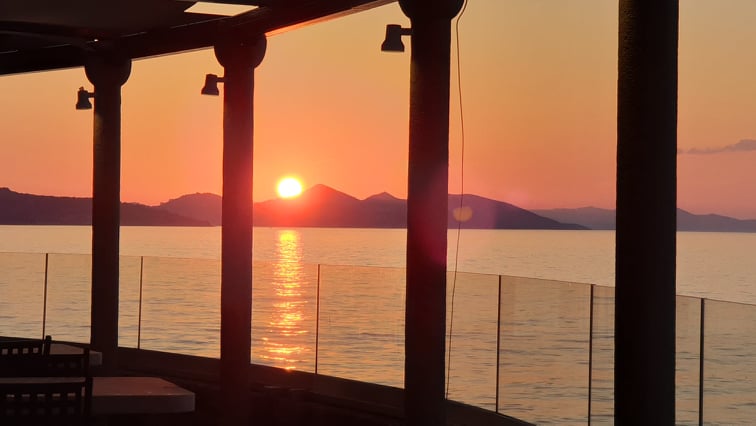
Places like Kalamota, as locals call the island of Kolocep, the closest of the three Elaphite islands. I discovered the three jewels of Kalamota, Lopud and Sipan quite late in life, having heard so many wax lyrical about them over the years. My first introduction was to Kalamota 3 years ago, and it was that stay which introduced me to the diversity on offer in and around Dubrovnik.
Kalamota is perfection for those wanting to escape the crowds and commune with nature. A car-free island (as is Lopud), time has stood still on the island, and the 120 locals still living there like it that way. A relaxed island lifestyle, but just 30 minutes by regular ferry to the Dubrovnik port of Gruz. It means that you can easily base your holiday in the chilled island atmosphere, while enjoying the charms of the old town as you wish. Two holidays in one.

And if you like sandy beaches...
There may be no cars, but the narrow island roads are not completely devoid of traffic, as golf carts and similar motors are used to move across Kalamota. One of the highlights of the trip was taking a hotel tour of the island in the back of a golf cart - it really was the best place to see the island. And there was certainly a lot to see.

As I have come to realise after 20 years, each Croatian island has its own unique qualities, and Kalamota was full of surprises and rewards for taking a look further than the beach. The churches, for example, were incredible.
There are no less than 15 churches on the small island - that is one per 8 inhabitants these days - and they are some of the most interesting in all Croatia. I particularly liked the Church of St. Nikola dating back to the 10th century - just how are people expected to squeeze through a main door like that?
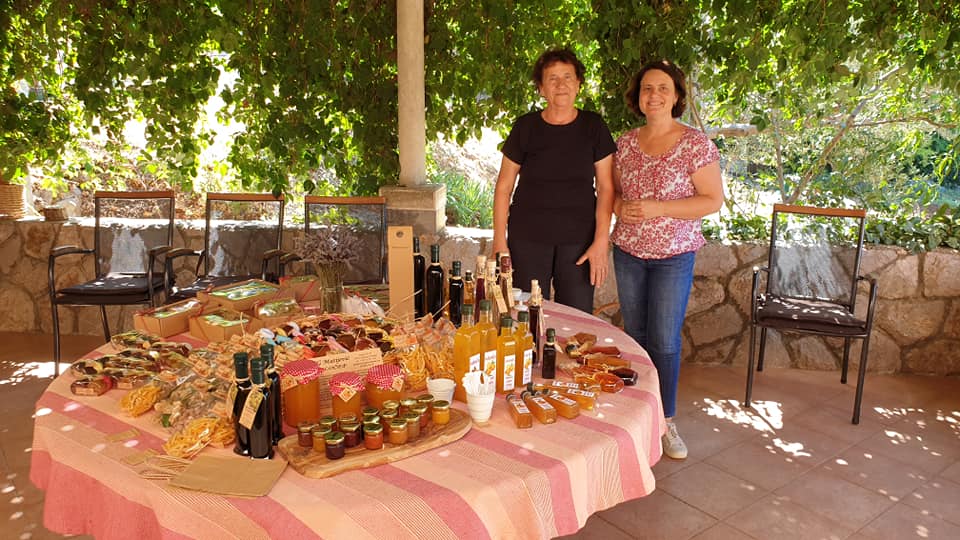
Tourism is about people, and there were plenty of personalities to behold, including these two lovely ladies who gave us an impressive tour of the fields where they are growing ingredients to produce this magnificent array of natural (and very healthy) Kalamota products for tourists.
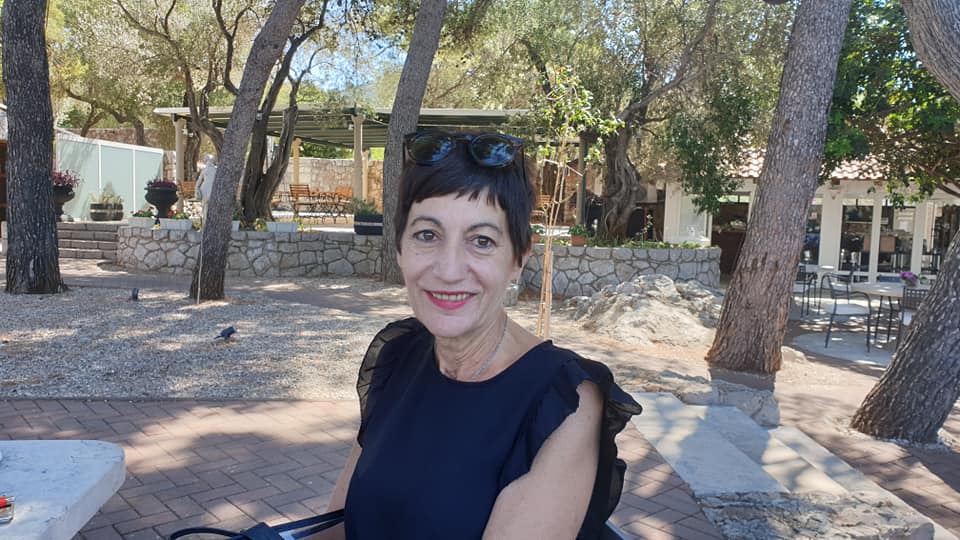
Talking of people, it was great to meet the teacher at the school on the island a couple of years ago. For an island with such a small population so close to the city, I was beyond impressed at the infrastructure and community. The full-time community of around 120 people has a school (with just two pupils), a resident doctor with his own surgery, and a fire station.
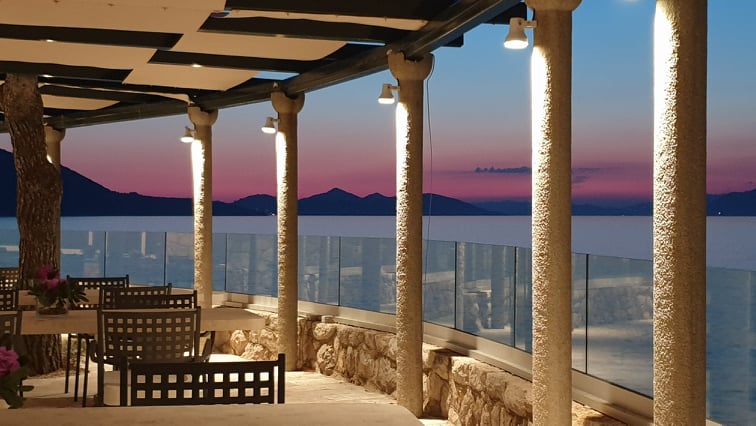
And weddings. Although a little off the beaten track perhaps, Kalamota is a great secret venue for weddings, with Villa Ruza the preferred destination. And with sunset views like that, are you surprised? In 2019, Villa Ruza hosted no less than 57 foreign weddings.
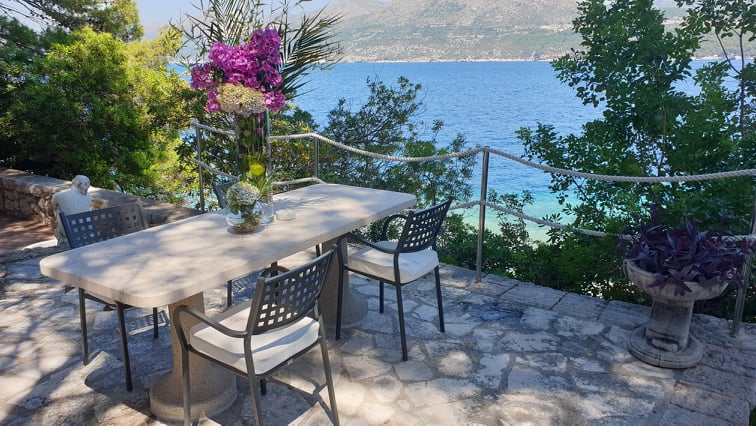
It is also a very popular restaurant for day-trippers, as well as Dubrovnik locals looking for a quality lunch away from the crowds. Dubrovnik, a 2-day destination which just has the old town?!? A perfect change of pace.
Timeless. The only sound coming from the sea and the trees, the main activity watching the Jadrolinija ferry glide gracefully back and forth between the Elaphite islands and Dubrovnik. Always on time, the ferry has become a timekeeping point of reference for locals.
The food was excellent, and don't miss this culinary piece of art if you like your fish with a little salt (order in advance). A sea-bream of 2 kilos, wrapped and baked in no less than THREE kilos of salt and egg white, then baked before being set on fire for show.
Some dining options from the Total Croatia Elaphite Islands in a Page guide:
Even though Kolocep Island is quite small, there are a few nice restaurants in both Gornje Celo and Donje Celo villages. In fact, Vila Ruza (Rose) in Donje Celo is hailed as one of the nicest restaurants in the Dubrovnik area. Its setting and beautiful terrace are reasons enough to visit. When you add to that great food and service you quickly understand why Villa Ruza is one place attracting guests from Dubrovnik year after year. In Gronje Celo, restaurant G Chelo belonging to Kalamota Beach House Hotel is a recent addition to the island’s dining scene. It features a lovely seating area and an imaginative menu. On the other side of the bay, Konoba Skerac is the local’s favourite.
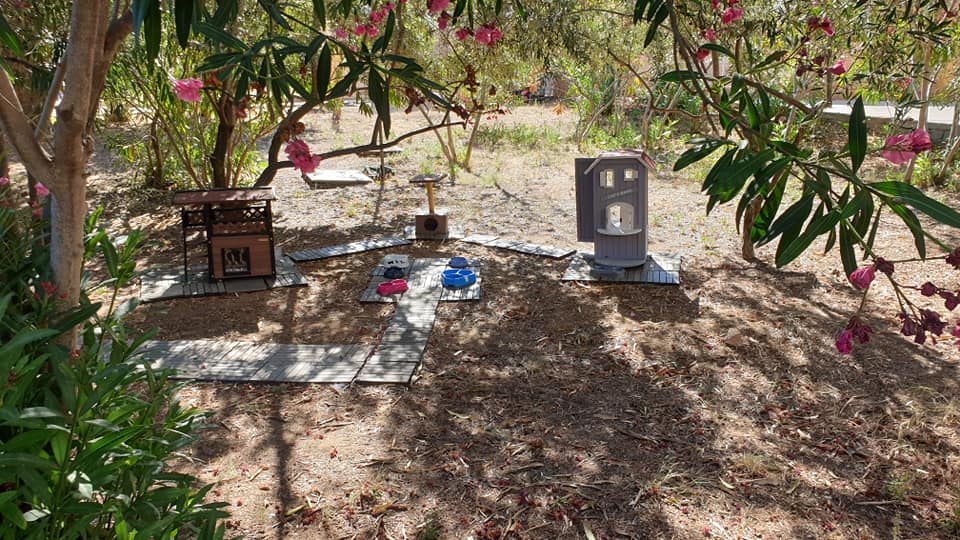
There is even a cat hotel...
Most visitors to Kalamota come for one thing only, stay for less than an hour, and then move on. For Kalamota's most famous for its Blue Cave, perhaps not as well known as its namesake on Bisevo, close to the island of Vis, but very much a must-do on the various island tours sold in Dubrovnik.
The Kolocep version is a small cave on the southwestern part of the island accessible by boat. Its name comes from the blue shade of the waters inside. You enter the cave by swimming or diving. It is wide enough to enter without difficulty, but the opening of it is only barely showing from the outside. It is an extremely popular stop for chartered boats and worth visiting for the ride to it as well.
Dubrovnik beyond the walls, a new way to look at the Pearl of the Adriatic. And with so many different options available, tailor your Dubrovnik experience to your specific needs.
To learn more about the Beyond the Dubrovnik Walls series, follow the dedicated section.


